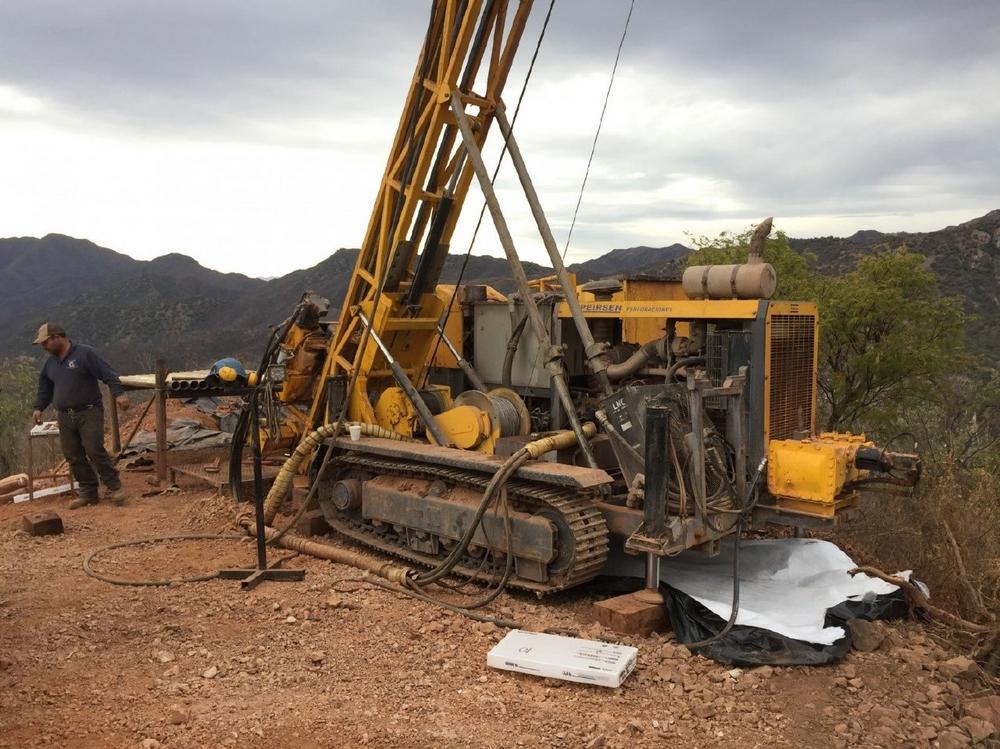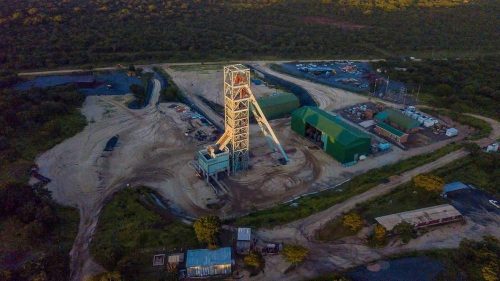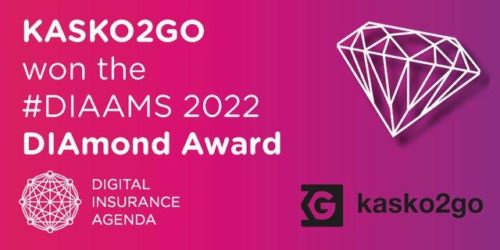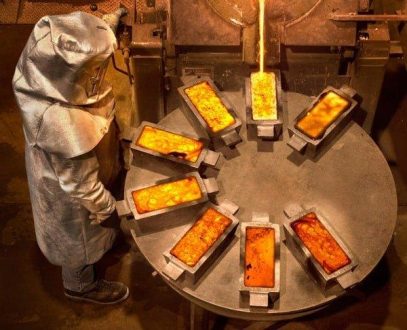
Aztec Minerals Now Fully Owns Cervantes Gold Project
All presented tables are my own material, unless stated otherwise.
All pictures are company material, unless stated otherwise.
All currencies are in US Dollars, unless stated otherwise.
Please note: the views, opinions, estimates, forecasts or predictions regarding Aztec’s resource potential are those of the author alone and do not represent views, opinions, estimates, forecasts or predictions of Aztec or Aztec’s management. Aztec has not in any way endorsed the views, opinions, estimates, forecasts or predictions provided by the author.
I must say I am truly puzzled by the deal terms, and the timing here. An acquisition price of 10M shares @ C$0.25, and a 0.5% NSR would amount to C$2.5M in shares plus an estimated C$1M value for the NSR, totaling C$3.5M for the 35% JV interest in Cervantes owned by Kootenay Silver. As I will estimate later on, a potential 0.9-1Moz Au heap leach project with low strip ratio and good metallurgy could easily be capable of fetching a hypothetical after tax NPV5 of US$150-200M. If we assume US$150M, a 35% interest translates into US$52.5M NPV5 or NAV, and with the current exchange rate of 1 USD for 1.29 CAD, this translates into C$67.8M. It probably isn’t very hard to understand that I view an acquisition price of C$3.5M in paper and NSR (which should be discounted as well as both most likely aren’t readily monetizable for the same price) which is just over 5% of NAV as an absolute bargain for Aztec. Granted, a resource hasn’t been defined yet let alone an economic study like a PEA, so additional discount is warranted, but the amount of completed drilling, at least in my view, points towards substantial numbers.
Before we delve a bit deeper into potential economics, let’s have a look at earlier reported final drill results of the 2021-2022 Phase 2 RC drill program at Cervantes, which has been completed in March for a total of 26 holes with 5,249m drilled. Most of the drilling was focused on the California Zone, but other targets are California North, Jasper and Purisima East. The final 4 results were targeting California, as can be seen here: (see attachement).
Of the four reported holes, three holes (22CAL-018/20/21) were aimed at a depth of 500m in order to test deeper porphyry potential below the oxides, but unfortunately hole 018 caved at a depth of 264.48m, meaning the drill bit was lost. When I discussed this with CEO Simon Dyakowski as I wondered how diamond drills could cave there, it appeared that the driller still used RC drilling, but with added power in order to reach the 500m depth target. This didn’t work out unfortunately, so 020 and 021 only drilled the oxide cap to appr. 200m depth. The results weren’t very economic, as only hole 018 hit 24m @ 0.216g/t Au, which is just above the 0.20g/t Au cut-off: (see attachement).
Hole 021 wasn’t a big surprise as it was a big stepout, but I expected more from 018, 019 and 020, as the immediately surrounding collars produced much longer, economic intercepts (50-165m @ 0.42-1g/t Au). Especially 018 disappointed as 004 to the west returned 165.68m @ 1g/t Au, and 008 to the east showed 54.72m @ 0.88g/t Au. If averaging this, one could arrive at around 100m @ 0.95g/t Au. A total mineralized length of 35m @ 0.24g/t Au is something else of course. When taking this into account, this could shave off 50-70koz Au from my hypothetical estimate, bringing it down to 930-950koz Au. It also shows you that more drilling is needed to establish continuity levels eligible for economic studies beyond a PEA, which can be done on Inferred alone although this is not recommended of course, as Inferred ounces aren’t even considered economic. Notwithstanding this, such limitations don’t hold me back from doing my own guesstimates on potential economics, which will follow later on in this article, as I think it is useful to get a grasp on the potential value of Cervantes.The amount of drilling done is sufficient for an Inferred resource, and part of it could be Indicated as well. When I asked CEO Dyakowski about his goals regarding which category further infill drilling and timelines, he answered: “Our current drill campaing is focused on drilling step out holes around California, California North, and Jasper, as well as 2 deep tests of the IP anomaly underlying the oxide cap. Follow up drilling whether it is more infill or additional step outs will be planned upon completion and receipt of results from the ongoing Phase 3 core drilling program”.
As earlier reported, hole 017 (see map above) to the north (24.3m @ 0.315g/t Au) signalled further potential for mineralized potential, CEO Dyakowski is planning to set up another drill program at California North. When asked about budget, meters and drill collar positioning, he stated: “The ongoing Phase 3 drill program is budgeted at 10 holes, and 3000 meters, we expect the cost of this program to be in the range of US$1 million, all-in”.
As the mineralization at the California Zone seems to be confined to the higher parts of a ridge, drilling in hole 017 indicated the openness of the targets, between California and a target zone called California North, there could be additional mineralization between the two target zones. The current 10 hole, 3,000m core drill program was announced on July 27, 2022, testing several other targets, including an infill hole between California and California North. Planned drill collar locations can be observed here: (see attachement).
According to the news release, there are three specific targets:
- “At the California target, where Aztec previously discovered extensive porphyry gold-copper mineralization (drill intercepts up to 1.002 gpt gold over 165.68m), Aztec will drill 7 step-out holes and one metallurgical hole with 30m to 450m spacings to expand and better define the area of mineralization, including two 625m deep holes to test at depth the strong IP chargeability anomaly that at its top has demonstrated strong sulfides in phyllic alteration with elevated copper – molybdenum – gold values.
- At the California North prospect, one hole will step out to the south to test the southern continuity of the gold – copper mineralization found at CAL22-017 (0.315 gpt over 24.32m towards the California target.
- At the Jasper prospect, one hole will step out to the northwest to test the continuity of the broad copper – gold mineralization found at JAS22-001 (200.6m/0.117 % Cu).”
It will be clear most of this program is geared towards trying to further expand and delineate a resource at the California target, accompanied by drilling a few step-outs and deep holes in order to hit a potential deep porphyry target, as was the intention from the start. As the deep porphyry would be a very nice wild card and a potential game changer if hit, I will follow this with great interest. As at an earlier stage Dyakowski contemplated a 5,000m program, I asked him why he opted for a 3,000m program instead. He answered “Drilling is starting later in the season due to completing our financing with Alamos, and consolidating ownership of the project, therefore we prioritized the targets to fit the drilling time window”. On a sidenote, I wondered why these new planned collars had different locations compared to the failed deeper holes 018/020/021. According to CEO Dyakowski these earlier holes were drilled from locations lower down the hill in order to try to get more favorable ground for RC drilling. With the current diamond core holes this is no longer needed, and locations more near the top of the ridge were deemed favorable by the geologists.
As management is currently also re-mapping the Estrella ridge, west of California, with the goal of generating drill targets, I wondered what the status of this work is. CEO Dyakowski answered that the mapping and roadcut sampling program is ongoing when there is downtime from drilling.
Having discussed exploration at Cervantes at length, let’s have a look at potential economics now. Since I guesstimated a 930-950koz Au resource, and most of it is located at the higher part of a ridge and open pittable, it seems a simple operation is possible with minimal dilution and strip ratio. I guesstimate the average grade at 0.70 g/t Au. A typical section looks like this: (see attachement).
Lots of drill holes have mineralization starting from surface, and when looking at the 2021-2022 drill results, my estimate for the strip ratio would be about 0.8:1. As usual a peer comparison with projects from competitors is done in order to derive credible assumptions, and for this the following heap leach gold projects were selected: (see attachement).
As always, a peer comparison is of course the most useful if the projects selected are as close as possible on parameters, but as no project is exactly the same, a sub-optimal comparison is the inevitable result directing our assumptions. Although inherently flawed, it provides at least some meaningful guidance, way beyond simple metrics like EV/oz or critically flawed metrics like "gross metal values compared to market cap”. Of course keep in mind that Aztec Minerals hasn’t even established a mineral resource estimate, so everything following here is extremely forward-looking.
There are a few basic assumptions that need to be established first. Since there isn’t defined what ore is oxidized and transitional yet, I assume 80% is oxidized. 80% of 930koz Au is 744koz Au. According to test results, oxidized holes generated extremely good 85.1-87.7% recoveries, and the mixed oxide/sulfide group 77.9%. Mixed oxides include transitional ore, and this last number is actually excellent, as often transitional ore has recoveries around 50-60%. As this is bottle roll leach testing and not exactly heap leaching, but still believe these results are above average, I assume an overall recovery of 70%. With some dilution/ore loss, I expect 900koz to be mined and processed. A minimal life of mine of 8 years generates 112.5koz Au ore per annum, at an average mill feed grade of 0.65g/t Au this would result in 5.38Mt ore mined per annum, and assuming a 350 day operation this would mean a 15,380 tpd throughput. At 70% recovery, Cervantes could produce 78,750oz Au per annum, meaning a LOM production of 630koz Au.
More specific, the capex and opex assumptions will be based on averages while taking into account scale and location, but the current rampant inflation makes any assumption pretty difficult, so I allow for a big margin for error. For capex, 2 of the analyzed peer projects have almost the same size of operation, with 18ktpd throughput. As the South Railroad FS is from February this year, I consider the much higher capex/tpd number (compared to the 2021 FS Camino Rojo study) much more reliable, and as we are almost half a year further down the road, I have no issues increasing the capex/tpd number to US$12,500/tpd. This results in a capex of US$192M.
For mining cost I like to assume a somewhat higher US$2/t as oil consumption is a big part of open pit mining, but the oil price hovers at the same levels like in February at the time of of the South Railroad FS. Mining costs mined, processed and processing is anybodies guess, but overall salaries haven’t increased as much as goods. Overall opex should be significantly lower than South Railroad, as the strip ratio for Cervantes is much lower. Sustaining capital is a difficult one, but I don’t really like to follow the very low number for Camino Rojo, hardly adding to the opex number when arriving at AISC, although labour is extremely cheap in Mexico, and will add some more. Corporate taxes in Mexico are 30%. This all results in the following numbers: (see attachement).
The hypothetical, solid after-tax NPV5 number of US$157M indicates why I think the deal with Kootenay is an absolute bargain for Aztec Minerals (as the deal values Cervantes at around C$10M in total), and this NPV5 number was calculated through this simplified DCF model: (see attachement).
Keep in mind I used conservative amounts for opex and especially capex. When inflation and subsequent pricing normalizes again in the future, capex will probably go down and economics will improve from here. To see a capex higher than NPV5 at gold US$1600 at a good grade/strip heap leach project is highly unusual, so maybe I was a bit too conservative. The IRR was generated through this standard calculation sheet for IRR: (see attachement).
An after-tax IRR of 24.9% isn’t exactly earth-shattering, but it is a good start, and well above the institutional threshold of 20%. Personally I expect a larger resource after all drilling is done, and hopefully Aztec will be able to achieve a resource large enough to transcend the important 100koz Au per annum production number. With a current market cap of C$21.39M in mind, the NPV5 of US$157M equals C$202.5M which would almost be a tenfold NPV, which implies healthy upside potential for me at least. Still early days of course, and although I believe my guesstimates to be conservative, many things can go wrong in the interim, starting with the resource number, inherently to junior mining as it is no exact science.
Let’s see where Aztec Mining would end up across some of its peers, if aforementioned guesstimates were to be realized. Several heap leach gold operations in the Americas were selected, one better suitable than the other as always with peer comparisons: (see attachement).
If Aztec Minerals was to prove up 930-950koz Au, this would give them a EV/oz metric of 22.1-22.5, which is on the high side of their peers with just a resource, but still with lots of room for improvement towards the economic study stage. And don’t forget Cervantes is not the only project in their portfolio of assets, as Tombstone could easily generate at least an economic 600koz Au resource as well in my view. When looking at the economic studies below, it is very likely that most studies need significant updates in the cost department, resulting in lower NPVs and IRRs.
If Aztec Minerals could in fact generate a PEA on Cervantes with a NPV5 close to C$200M, a P/NAV of 0.1 would still be on the low side, except outliers like Kore Mining, which has to deal with California permitting under a Democrat government. All things considered, I like the prospects of Aztec, plus their additional wildcards regarding deep targets at both Cervantes and Tombstone.
On a final note I discussed with CEO Dyakowski the subject of Aztec also planning a drill program for their Tombstone gold-silver oxide project (subject to a 75/25 JV with Aztec as the operator) in Arizona for the summer as mentioned in an earlier article, and I wondered if there are any advanced plans ready to commence. He stated that they are contemplating a Q4 2022 core drilling program at Tombstone, and have been active this year at Tombstone with mapping and modelling programs designed to assist future drilling efforts”.
Conclusion
It seems the Aztec team just made one of the better deals in junior mining land in my view, as Aztec is going to pay about 1/45th of my implied/guesstimated NPV5 value for a 35% interest in Cervantes to Kootenay in order to gain full ownership. And not even in cash but in paper and a small royalty. And all this in a phase of low valuations and negative sentiment, so all I can say this is a very well-timed deal by Aztec Minerals, to acquire the 35% interest at a bottom. Not only does Aztec have all the upside with a 100% owned project now, but this makes it also much easier to advance and sell the project in the future, not having to deal with other parties anymore. As drilling continues, I’m curious if Aztec will be able to meaningfully add more ounces, and who knows, find something at depth at Cervantes.
I hope you will find this article interesting and useful, and will have further interest in my upcoming articles on mining. To never miss a thing, please subscribe to my free newsletter at www.criticalinvestor.eu, in order to get an email notice of my new articles soon after they are published.
Disclaimer:
The author is not a registered investment advisor, and currently has a position in this stock. Aztec Minerals is a sponsoring company. All facts are to be checked by the reader. For more information go to www.aztecminerals.com and read the company’s profile and official documents on www.sedar.com, also for important risk disclosures. This article is provided for information purposes only, and is not intended to be investment advice of any kind, and all readers are encouraged to do their own due diligence, and talk to their own licensed investment advisors prior to making any investment decisions.
Swiss Resource Capital AG
Poststrasse 1
CH9100 Herisau
Telefon: +41 (71) 354-8501
Telefax: +41 (71) 560-4271
http://www.resource-capital.ch
CEO
Telefon: +41 (71) 3548501
E-Mail: js@resource-capital.ch
![]()




